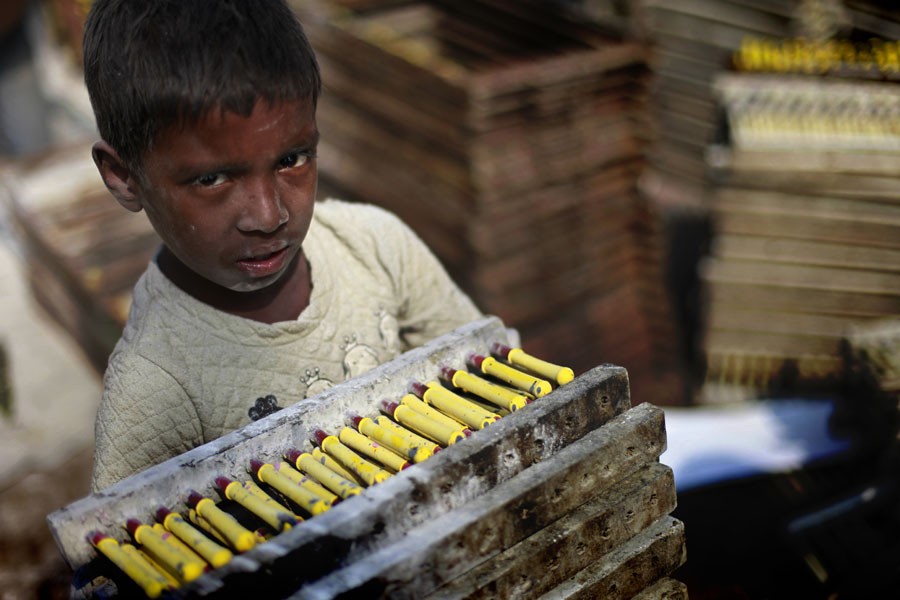Swapan, an 11-year-old boy who dropped out of school in his early life due to abject poverty, was busy doing work in shabby and dirty attire at an aluminium factory in Kamrangirchar area of Dhaka.
When children go to school at his age, he does the most hazardous job for 10-11 hours a day. He is getting Tk 800 a week for his job.
Another boy Alamgir (13), who used to work with his father at their vegetable shop in his early life, wanted to go to school, but he could not as he needs to contribute to his family.
Even he is not aware of hazardous job and law which does not allow him to do such work. He only believed that he had to help his family.
Like Swapan and Alamgir, some other boys are also working at the same factory.
Experts said though the overall child labour remains static, it is increasing in the informal sector due to lack of strict monitoring.
Currently, there is a little visible progress in National Plan of Action (NPA) to protect the children from hazardous job in this sector, they added.
Employers are paying lower wages to child workers than adult workers.
According to a survey carried out by the International Labour Organisation (ILO) in 2013, some 3.45 million children in the age group of 5 to 17 years were child labourers. Of them, 1.28 million (12.80 lakh) children were engaged in hazardous labour in the country.
The government is committed to eliminating child labour in hazardous jobs by 2021 and all types of child labour by 2025.
Some 46 per cent of children whose ages range from 8 to 18 years are involved in risky labour in the city's Kamrangirchar area, according to a recent baseline survey conducted by UK-based International Development Organisation Islamic Relief.
These children are working at 604 factories in the area. There are 27 types of small and medium factories.
Ehsanul Hoque, programme specialist at Child Protection of Terre des Hommes, the Netherlands, said the area is an example of hazardous jobs for children in the informal sector.
The government should look into why hazardous jobs for children are increasing in the sector, he added.
Abdus Shahid Mahmood, director at Bangladesh Shishu Adhikar Forum (BSAF), said though the government had been successful in eliminating risky child labour in the formal sector, the informal sector was yet to get rid of it.
Expressing his concern, he said the government should closely monitor the informal sector and small factories.
The vested quarter, employing the children in hazardous jobs, must be brought to justice, Mr Mahmood told the FE.
He also stressed the need for stepping up supervision and surveillance on 38 child labour-prone sectors, which were listed by the government earlier.
The families, which make their children do those jobs, should be given financial support so that they do not engage them in such activities, he added.
Social awareness must be created against child labour, the director said.
At a function on September 18, State Minister for Labour and Employment Md Mujibul Haque Chunnu said the government was ready to take up a Tk 30 million (300 crore) project to get 0.1 million child labourers out of hazardous jobs by 2021.
National Human Rights Commission (NHRC) Chairman Kazi Reazul Hoque at a seminar on June 11 voiced his concern over rising child labour in hazardous jobs in the country.
The way such child labour was rising, it would double by 2025, he said.


